In 2015, my family and I visited Holland for the first time. As part of our first European road trip, this was a stop we were very excited about when planning the trip. When you think about Holland, you probably think of wooden shoes (clogs), tulip fields, and picturesque windmills. These are some of the most iconic features of this beautiful land, and the reason we were full of anticipation when entering the Netherlands.
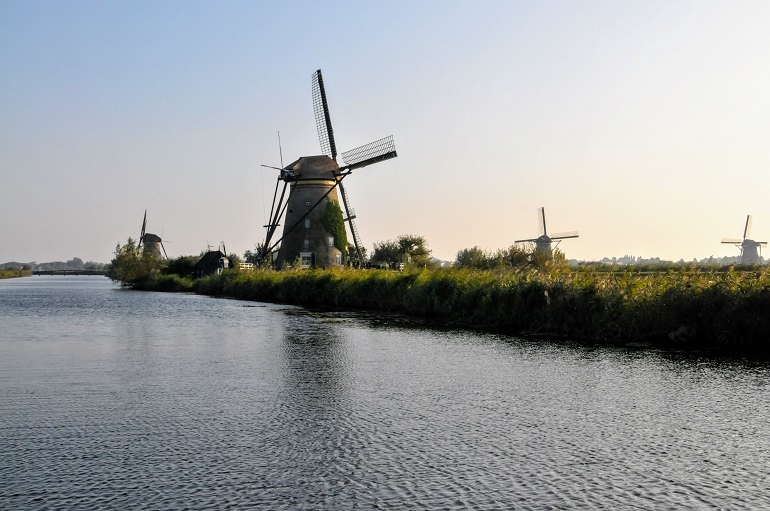
The name “Netherlands” comes from the Dutch word Nederland, which literally means “lower land”. Some of the land is so low that over a quarter of the nation actually lies below sea level, including much of Holland!
What is the difference between Holland and the Netherlands?
Many often confuse the terms “Holland” and “the Netherlands” to mean the same thing. Thus, often people will refer to Holland, when the entire nation of the Netherlands is meant.  To explain the difference briefly, the Netherlands is the short name for “The Kingdom of the Netherlands”. The Netherlands are made up of 12 provinces, and 3 special municipalities (over seas). Holland makes up only 2 of the 12 provinces – named Noord-Holland and Zuid-Holland (North Holland and South Holland respectively).
To explain the difference briefly, the Netherlands is the short name for “The Kingdom of the Netherlands”. The Netherlands are made up of 12 provinces, and 3 special municipalities (over seas). Holland makes up only 2 of the 12 provinces – named Noord-Holland and Zuid-Holland (North Holland and South Holland respectively).
Back when the kingdom was first established by Napoleon and led by his brother King Louis Bonaparte in 1806, Holland was the major economic contributor to the kingdom. The land even bore the name “Kingdom of Holland” for 4 years from 1806-1810. After Napoleon’s defeat, the Netherlands remained a kingdom, however united into the nation we know today with Holland being only a small part of the whole. See the map for all constituent parts of the Netherlands.
Visiting the Windmills of Kinderdijk
Our family’s primary goal in visiting Holland was to see the iconic Dutch windmills the land is famous for. We were hoping for a chance to see them up close, and even have a chance to go in a working one if possible.
One of the places I discovered in my research that affords such an opportunity is Kinderdijk (pronounced: kinder-dike). This small Dutch village in South Holland features nineteen well-kept authentic 18th century windmills, 3 pumping stations, and a network of dikes and reservoirs that earned the site UNESCO World Heritage status in 1997.
Kinderdijk is an excellent place to visit with or without children. However if you have kids, be sure to bring them because they will definitely enjoy it! The name Kinderdijk literally means “Children’s dike” in Dutch which originates from the Dutch folktale “The Cat in the Cradle“. The legend states that following the great Saint Elizabeth Flood of 1421, a basket was spotted floating on the water on one of the inundated canals of the area. The basket was found to be carrying an orphaned infant and a cat who was bouncing from side to side in an effort to keep the cradle balanced while protecting the baby inside. This local legend became a modern fairy tale and is what gave the village of Kinderdijk its name.
Kinderdijk is situated in a polder at the confluence of the Lek and Noord rivers. While there are several ways to reach Kinderdijk using public transportation, the process is very time consuming. Buses and water-buses are the easiest ways if staying near Rotterdam. However, if you have a vehicle, I would recommend this over using public transportation – mainly for the location. There is a large parking lot for a minimal charge. Complete directions can be found here. You can also zoom in and out of the map below to see it’s location.
Our visit to the Windmills of Kinderdijk
The UNESCO World Heritage site consists of a large rural water management system consisting of many water ways connecting the network of working windmills. Unlike windmills that generate electrical power, the Dutch windmill’s function is to pump water out of the lowlands and back into the rivers beyond the dikes, so the land could be farmed.
Over the centuries the Dutch have developed ingenious ways to manage their unique topology. Today they are revered as the top water management experts in the world and often provide advice to many other nations. The windmills of Kinderdijk and of Holland stand as a testament to the ingenuity of the Dutch engineers and still function today!
Visitors to Kinderdijk have the unique opportunity to explore an entire working network of windmills at your own pace. There are plenty of walkways and bicycle paths for visitors to enjoy and an excellent visitors center where a demonstration of the history of Kinderdijk and the windmills of Holland are explained in detail. This was extremely educational and very well done. The kids really enjoyed it as did we!

While walking around the area was incredibly beautiful and enjoyable for the scenery and the nature the site provides, visitors are able to tour a working windmill and experience how the keeper of the windmill used to live prior to automation. There are even some fun wooden clogs for the kids to try on!
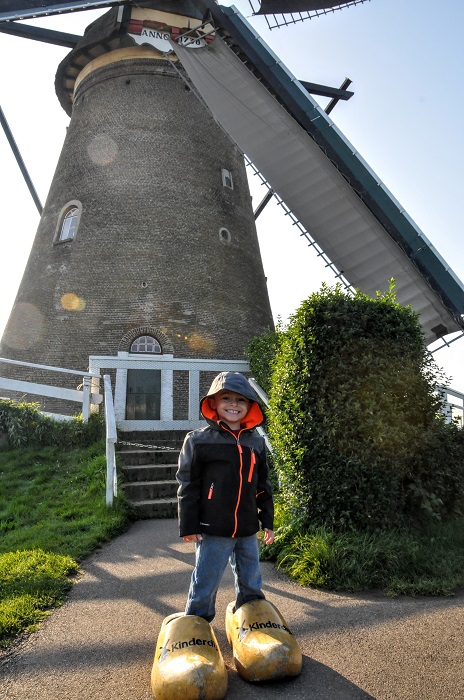
While the tour was all self-guided, it was still very enjoyable and I was very impressed with how the inside living quarters were so accessible when most “museums” have these areas roped off. I was even able to sit on the bed which you’d never be able to do in any historical museum I’ve ever been to!
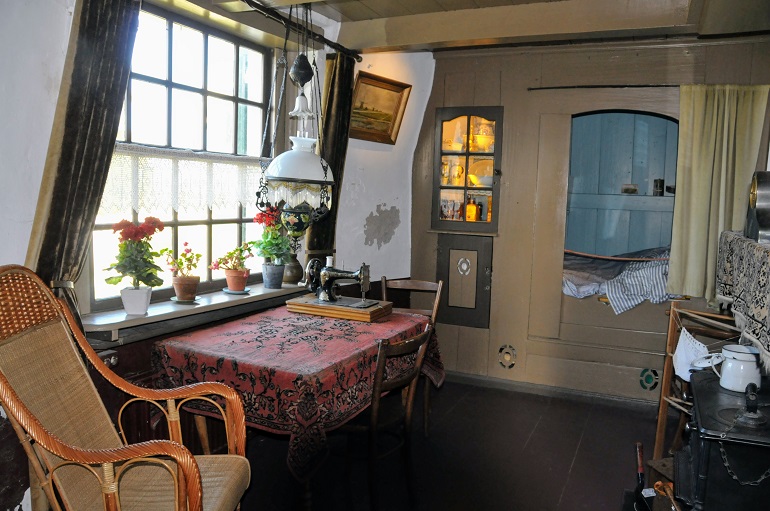

Many of the walls within the windmill featured historic photographs of the area over the past couple of centuries. Some even showed photos of families who lived in the windmills and kept them running. There were even some authentic wooden clogs on the wall which gave the experience the truly authentic “Holland experience”.
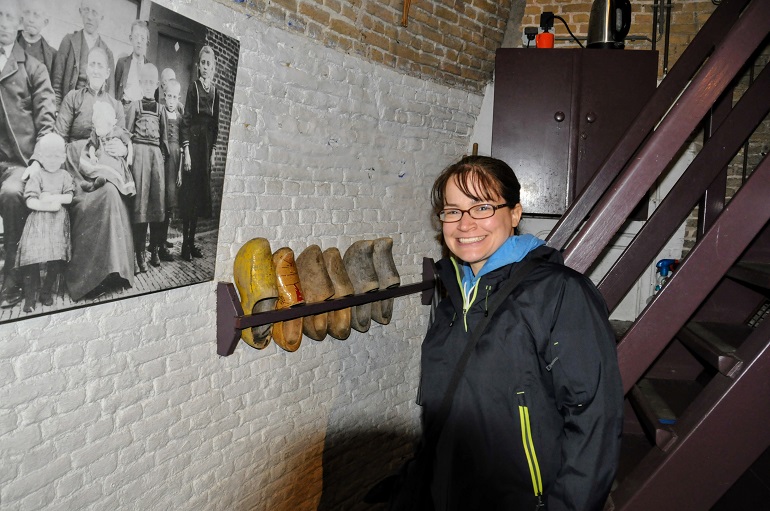
There were several levels to the windmill each with different functions to the living quarters and keep of the windmill. The kids loved climbing the stairs from level to level to explore what waited next.
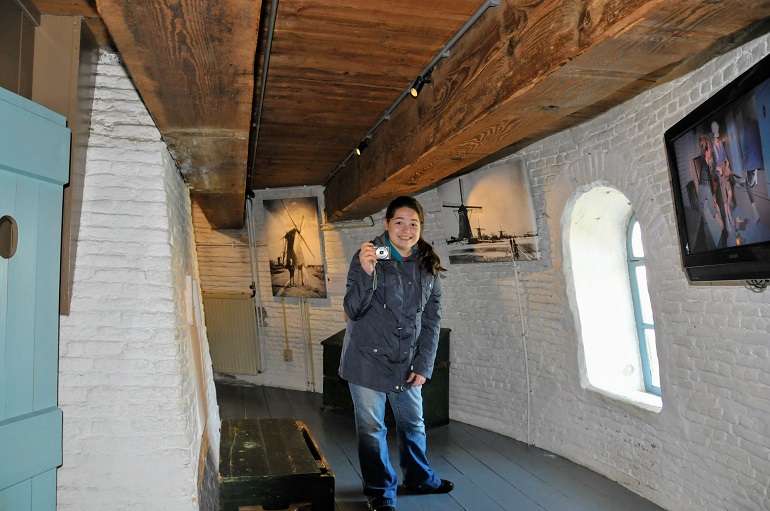
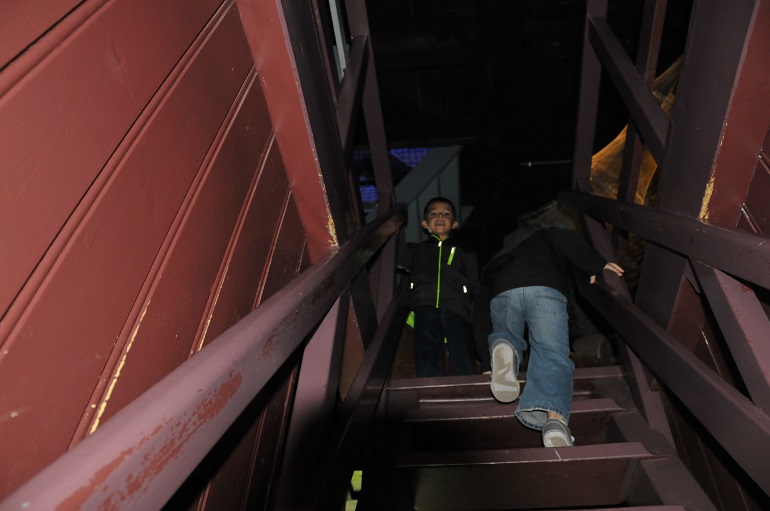
The very top of the windmill was the one area that was closed off with a large metal cage since this was where the main gears that turned the vanes of the windmill were housed. While the picture doesn’t do it much justice, I will work on adding a video here in a future update.
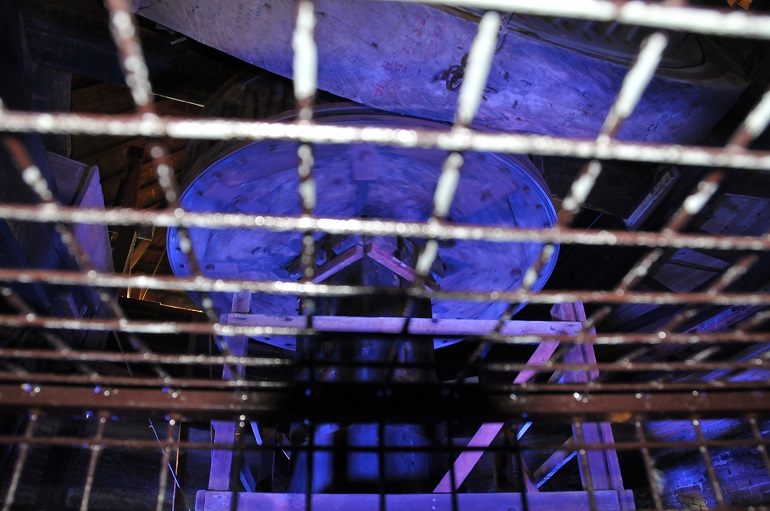
Once back outside we strolled around the grounds and took several pictures. It was a beautiful October day and with the sun shining it made for excellent photos of the family and kids.
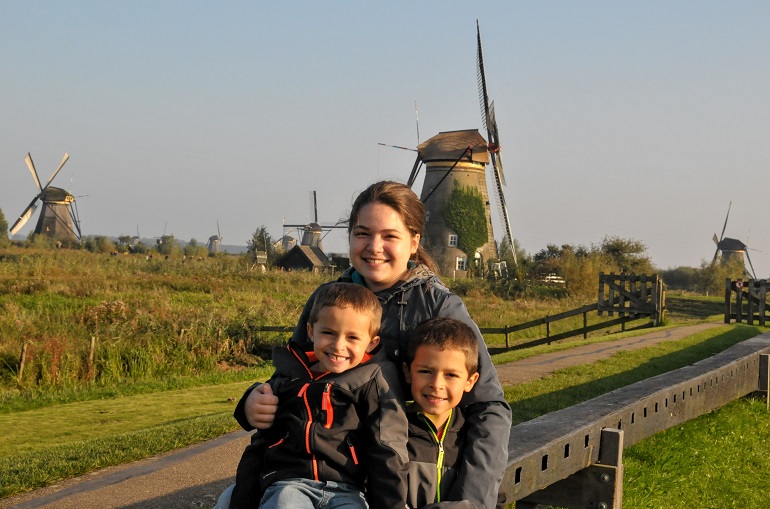
After exploring some more of the area we walked our way back to the entrance and continued on our journey. To this day, this is one of our favorite locations we’ve visited in all 18 European countries we’ve visited! If you enjoy exploring quiet and peaceful nature areas away from the crowded cities, and learning all about Dutch history, you will definitely enjoy Kinderdijk!
If you have any questions about Kinderdijk, or visiting the Netherlands in general, feel free to ask me and I’ll answer it just as soon as I am able. Thank you for reading my blog. If you enjoyed this article, please leave me a comment below and/or subscribe to the blog to have new posts sent directly to your inbox. The subscription form is located on the right sidebar (scroll down on mobile devices). Thank you so much for your support!
Disclosure: There are some affiliate links on this page. While the prices of the items displayed on this website are no different than on each advertisers websites, we do earn a commission if you choose to purchase. Thank you for supporting Off with the Kids and helping us share our adventures!







What a fascinating read! I never knew there was a difference between the Netherlands and Holland. And I loved learning about the local Cat in the Cradle lore. Thanks for this great article.
Thanks so much for the kind comment April. Really appreciate the feedback! 🙂
Such a cool trip! Your son is so lucky to have traveling parents!
Thank you Linda for the kind comment!
I really enjoyed reading this. Written so well, and love the photos!
Thank you so much Joanne! Your comment is really appreciated! 🙂
Love this post, especially the photos…
I’ll say me too!, Me too wish to visit these places in the Netherlands.
Just waiting for enough cash saved up 🙂